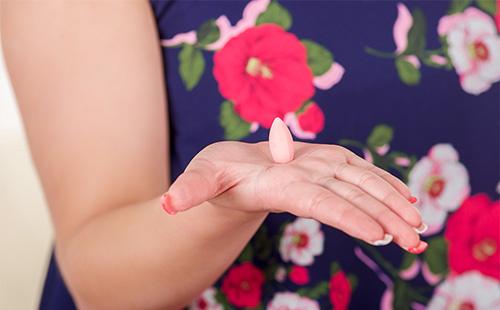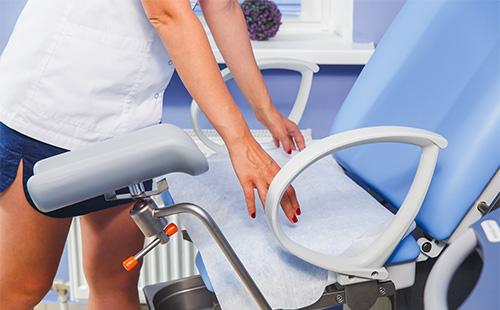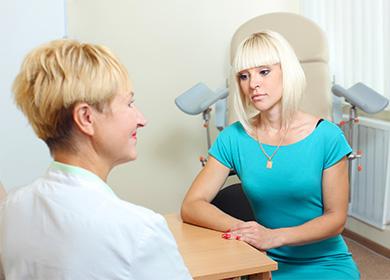The content of the article
Some believe that chlamydia is in the body constantly, and is activated at the moment of weakening of the immune system. If this is observed, this is direct evidence that the treatment regimen was ineffective or not fully completed. Chlamydia does not live long in cells, it is simply difficult to cure them. How is chlamydia manifested in women, and what to do with it?
What kind of infection
Chlamydia - microorganisms with intracellular parasitism. Their life cycle is complex and includes a period of exit from the cells and tissues where they are located. It is at this point that you can get rid of chlamydia. They have a life cycle of about 48-72 hours, so the most effective treatment is at least seven days of taking antibacterial agents. There are many types of chlamydia. Human diseases can cause the following:
- chlamydia trachomatis - Chlamydia trachomatis lives in the genitourinary tract in men and women, causing inflammation, can spread throughout the body with the occurrence of appropriate complications (arthritis, conjunctivitis);
- chlamydia pneumonia - Chlamydia pneumoniae is found in the respiratory tract, causing atypical pneumonia most often in young people.
Features
An important feature of chlamydia is the following:
- are inside the cells - most part of time;
- able to go into L-forms - which are “hidden” from the immune system;
- L-forms are easily activated - with a decrease in the body's defenses.
Transmission ways
Only Chlamydia pneumonia is transmitted by airborne droplets. Therefore, infection can occur through contact with a sick person or an asymptomatic carrier. Chlamydia trachomatis is found in human biological fluids - vaginal discharge, urethra. Infection occurs through close contact with this material. The following transmission routes are possible:
- sexual - in 99% of cases, infection occurs in this way, it can be vaginal, anal, oral and other types of intimate relationships;
- household - characteristic of infecting young children from sick parents, while they have conjunctivitis, vulvites (in girls);
- public - it is theoretically possible infection in baths, saunas, however, the likelihood of an active infection with this route of infection is minimal (when swimming in pools, chlamydia is not transmitted).
Symptoms of chlamydia in women
Symptoms of chlamydia in women proceed as acute or chronic adnexitis. Less often, colpitis appears in the first place by signs of inflammation, since these pathogens cannot multiply in the acidic environment of the vagina and are inactive when the vaginal mucosa is in the squamous epithelium. Severe chlamydial colpitis occurs only during pregnancy, in adolescence, with hormonal disorders and in menopause. Sometimes there is a latent form of the disease without obvious signs.
Genital infection
The main complaints with genital lesions are as follows.
- Discharge. Chlamydia is characterized by creamy, non-abundant discharge. They can irritate the vulva, perineum and labia, causing itching and burning. The rash is uncharacteristic for this form of chlamydia.
- Bad smell. Chlamydia is often accompanied by bacterial vaginosis due to a disturbance in the flora, so an unpleasant "fishy" odor is added.
- Pain A woman may be disturbed by periodic pulling pains in the lower abdomen and lower back, discomfort during an intimate relationship. Often, symptoms intensify during menstruation.
Mouth damage
With oral sexual contact (extremely rarely through wounds in the oral cavity when using the same dishes with a sick person), the development of oral chlamydia is possible. In this case, the following set of symptoms occurs:
- nasal congestion;
- hard crusts in the nasal passages;
- thick sticky mucus on the back of the pharynx;
- white coating on the tongue;
- bad fish smell from the mouth;
- the formation of ulcers in the tongue and oral mucosa;
- lack of purulent raids on the tonsils.
Reuters Syndrome
Reiter's disease is characterized by damage to the joints and mucous membranes of the eyes. Symptoms appear no earlier than a month after infection. Sometimes the first signs of chlamydia in this form occur after several years.
The following are characteristic:
- arthritis - inflammation of the joints (usually knee) with severe pain, swelling;
- conjunctivitis - Usually this is a bilateral eye lesion that goes away even without treatment within a week.
Additionally, a rash may appear on the genitals, palms and soles of the feet. Often the picture is worn out, which greatly complicates the diagnosis. Therefore, young girls and guys with the appearance of pain in the joints are assigned a full examination for chlamydia.
When can you suspect
A mandatory examination for chlamydia should be carried out in the following cases:
- with recurrent colpitis
- in case of bacterial vaginosis;
- with infertility;
- when installed cervicitis (inflammation in the cervix);
- with an atypical course of pneumonia, oral cavity;
- with suspected Reiter's disease;
- with pathology of gestation (miscarriages, frozen pregnancies).
How to detect
Conventional smears and oncocytology, which are carried out in consultations, do not reveal chlamydia. According to the results, you can only suspect active inflammation and prescribe an additional examination. Diagnosis of chlamydia in women involves the following studies.
Polymerase chain reaction
With the right analysis, it is the most informative method. PCR shows whether there are currently active chlamydia in the test material. For the most reliable study, a PCR-real-time study is recommended. Its main difference is high sensitivity, the minimum probability of false-positive results on part of the membranes or intracellular structures of chlamydia.
Material sampling (scraping with Volkman's spoon) is carried out from the urethra, cervical canal, posterior vaginal fornix.If necessary, any biological fluids of a person can be examined - urine, saliva, scraping from the tonsils, posterior pharyngeal wall. Recommendations for obtaining a reliable analysis result are as follows:
- refrain from intimate relationships 48 hours before analysis;
- do not douche on the eve;
- carry out the latest hygiene activities the night before;
- do not take antibiotics three weeks before the test;
- do not urinate two to three hours before the smears.
Sometimes in different clinics during the study on PCR chlamydia, different, sometimes contradictory, results are obtained. The case may be as follows:
- different sensitivity of reagents - therefore, it is better to choose "proven" centers;
- false positive results - the PCR method "takes" for the presence of chlamydia even the detection of particles of their genetic material that could remain after a course of treatment, therefore it is important to maintain the time period after treatment and give preference to real-time PCR;
- re-infection - if you do not follow the recommendations for the prevention of infection during treatment, you can get sick again.

Linked immunosorbent assay
The ELISA method (enzyme immunoassay) allows you to detect not the chlamydia themselves, but the presence of antibodies to them. But according to its results, one can indirectly judge the presence of infection and the activity of inflammation. The following types of immunoglobulins are determined by ELISA:
- Ig M - are formed in the acute phase of inflammation, their presence indicates active chlamydia;
- Ig A - are formed in the subacute period of infection;
- Ig G - circulate in the blood throughout life, are an indicator of an infection.
Only a specialist can correctly interpret the result and determine the need for treatment. Sample data are presented in the table.
Table - How to analyze if there is chlamydia
| PCR result | IFA - Ig M | ELISA - Ig G | Do I need treatment |
|---|---|---|---|
| Discovered | Positive | Negative | - active infection; - treatment is necessary |
| Discovered | Positive | Positive | - Subacute period of infection; - treatment is necessary |
| Discovered | Negative | Positive | - "Old" infection; - treatment is necessary |
| Not detected | Negative | Positive | - Once transferred chlamydia; - no treatment needed |
| Not detected | Negative | Negative | There is no infection and never was |
The determination of the presence of chlamydia according to the results of an ELISA study is fraught with overdiagnosis. Especially if the titer is determined only Ig G, which can be detected throughout life in a woman who once suffered an infection.
Sowing
Chlamydia plating is not used in routine examination methods due to the fact that it is an extremely expensive and time-consuming process, it is difficult to establish its mass screening. However, according to its results, one can study the sensitivity of microbes to various antibiotics.
Complications
Urogenital chlamydia is dangerous for the following complications for a woman:
- cervical dysplasia;
- chronic endometritis;
- chronic salpingo-oophoritis;
- obstruction of the fallopian tubes;
- pronounced adhesion process in the pelvis;
- chronic pelvic pain;
- infertility;
- Reiter's disease;
- chlamydial peritonitis and abscesses.
During pregnancy, chlamydia is fraught with pathologies:
- non-developing pregnancy;
- interruption at different times;
- intrauterine infection of the child;
- congenital chlamydial infection of the eyes and pneumonia in the baby.
It is important to identify the infection at the planning stage, undergo a full course of treatment and only after that try to get pregnant.

Treatment
The main drugs for the treatment of chlamydia are antibiotics. Moreover, drugs of a wide spectrum of action are used.Often, women take them to treat urinary tract infections, after a complicated course of the flu, with pneumonia, otitis media, sinusitis. As a result, after some time, once transferred chlamydia can be detected, which was treated “at the same time”. Folk remedies can not cure the infection - you can only reduce symptoms and discomfort for a while.
Preparations
The treatment regimen and combination of drugs is prescribed by the doctor individually. Often this is a combination of two or more antibiotics, which you can take on your own at home. Used drugs are presented in the table.
Table - Treatment regimens for acute and chronic chlamydia
| Active substance | Commercial name | Schemes and doses |
|---|---|---|
| Doxycycline | - “Unidox Solutab”; - "Vibramycin"; - "Doxycycline" | 100 mg twice daily for 10 days |
| Azithromycin | - "Azikar"; - “Sumamed”; - "Sumatrolide"; - "Azithromycin" | 1 g twice or thrice with an interval of 7 days |
| Erythromycin | Erythromycin | 500 mg every 6 hours for 5-7 days |
| Amoxicillin | - "Amoklav"; - "Flemoxin"; - Amosin | 500 mg 2-3 times a day for 10-14 days |
| Josamycin | - "Wilprafen"; - “Josamycin” | - 500 mg 3 times a day for a week; - 1000 mg 2 times a day for a week |
| Ofloxacin | - "Tarid"; - “Zanocin”; - Ofloxacin | 400 mg 2 times a day for 7-10 days |
| Clarithromycin | - “Clarithromycin”; - "Klacid"; - "Fromilin"; - Clubax | 500 mg 2 times a day for 7-10 days |
Additionally, the following drugs can be prescribed, especially in cases of constant (persistent) infection:
- enzymatic - enhance the effect of antibiotics, are prevention of adhesions ("Wobenzym", "Longidaza»);
- candles - for local rehabilitation and removal of unpleasant symptoms (Pozhinaks,Terzhinan"," Clindacin ");
- anti-candidiasis - the use of antibiotics can lead to candidiasis of the intestines and vagina, therefore, for the prevention, a single dose of "Fluconazole" is prescribed;
- to protect the liver - all drugs are destroyed in the liver, hepatoprotectors (Harsil) can be used if necessary to protect the organ.
Remediation of a sexual partner
If chlamydia is detected in one of the partners, the second one can not even be examined - it is necessary to treat it. For the duration of therapy, it is necessary to refrain from intimate relationships, in extreme cases - use a condom.
Sexual contact is allowed to resume only after a negative control result on chlamydia three to four weeks after the end of treatment. The resumption of relationships earlier can lead to re-infection (one partner can be cured, and the other can’t, even with the same schemes), chronization of the process and the transition of chlamydia into “inaccessible” L-forms.
During pregnancy
It is necessary to treat chlamydia during pregnancy, following the general recommendations. The only thing is that while carrying a limited range of drugs. The most effective and safest is considered to be "Josamycin", the treatment "Azithromycin"," Amoxicillin "at specific times.

Healing Control
In order to prevent the dangerous consequences of chlamydia for women, it is important not only to treat the infection, but also to conduct a control study after a course of therapy. There are two ways to do this.
- PCR. An informative study is not earlier than three to four weeks after the end of the course of taking antibiotics. Material sampling should be carried out from those places where chlamydia was found. It is better to use the PCR-real-time method.
- IFA in dynamics. This option should be used when it is not possible to pass PCR. For the reliability of the result, it is important to determine Ig M and Ig G with an interval of two to three weeks. But the result does not show that there is no chlamydia at all - you can only track the positive dynamics and suggest the effectiveness of the treatment.
Prevention
To prevent chlamydia, like any genital infection, the following sexual literacy requirements should be observed:
- use condoms for protection;
- abandon promiscuous sexual intercourse;
- in case of complaints, be examined by a doctor;
- in public places (baths, saunas) use personal hygiene items.
Chlamydia refers to sexually transmitted infections, which almost always have unpleasant consequences for a woman. Photo reviews confirm that pipe infertility is diagnosed in 80% of cases of pathology, you can read them on the forum. Illiterate and incomplete treatment of chlamydia in women leads to frequent relapses.
Reviews
Recently I decided to undergo a full examination. I took tests in a private clinic, a young man a little later, in the police department (he always passes there). They found ureaplasma, prescribed treatment, I bought all the drugs for 3 thousand rubles. Later came tests of my young man, he has chlamydia. His doctor said that even if one finds this disease, they will still prescribe treatment for both partners, even if I do not separately test them. The treatment said the same as ureaplasma. I started to embed candles genferon, then I'll start antibiotics. I’m scared for the consequences and I’m afraid it would not have been treated the second time. After all, it is difficult to bring it out.
Kristina, http://www.woman.ru/health/woman-health/thread/3833536/
The girls began to bother me with discharge, they became odorous over time, and I could not imagine that my fiancé (former) awarded me ... I went to a free womens consultation at Kolomenskaya. passed tests, chlamydia found in strong form ... large numbers .. prescribed terzhinan nystatin and doccycline and hilacforte, in general, I drank for almost 2 weeks .. 3-4 tablets a day and inserted candles .. after taking doccycline or nystatin, and I took them together .. my condition worsened .. almost to nausea .. I went to bed and I almost drooled)))) in general I didn’t like to endure this condition, I quit and didn’t heal .. now I understand that I need to go to the doctor again and tell about this problem that the medications apparently do not suit me, but already scary .. I was tormented by (((((((((((((((
Irs http://www.woman.ru/health/woman-health/thread/3833536/
They found me once. was treated with her husband. after 6 months again found, spat on shame and went to the ven.despancer. they explained that it can be worn for years and the more you wear the more difficult the treatment. drank, medicines, pricked injections, took vitamins in parallel. they spent a lot of money, but uprooted. for four years now they haven’t revealed anything. and I’m handing over the deposits regularly, the profession obliges me. Find a good doctor, and he will already tell when to take it and what exactly. good luck.
Winter, http://forum.forumok.ru/lofiversion/index.php?t40460.html
When chlamydia and herpes were confirmed in a smear and blood, there were no manifestations at all. In general, I went to take tests for prevention, I always hand over once a year. There may be some kind of discomfort there, mucous discharge ... yes, there is nothing really so terrible ... But these can be manifestations of any other infection.
Chlamydia then in principle often does not manifest itself in any way, it only destroys everything. And now I plan B and want to check.Irene http://forum.forumok.ru/lofiversion/index.php?t40460.html

